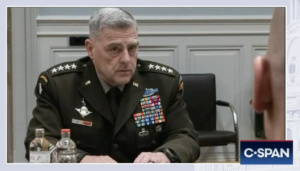 On January 27th, an AP story appeared on the news website Military.com with the headline “Intelligence Sharing by the US and Its Allies Has Saved Lives. Trump Could Test Those Ties.” On the surface, it reads like one of those analysis pieces that come out when the White House changes from one party to the next, with the added twist of knowing what the first Trump administration was like.
On January 27th, an AP story appeared on the news website Military.com with the headline “Intelligence Sharing by the US and Its Allies Has Saved Lives. Trump Could Test Those Ties.” On the surface, it reads like one of those analysis pieces that come out when the White House changes from one party to the next, with the added twist of knowing what the first Trump administration was like.
The Associated Press spoke with 18 current and former senior European and U.S. officials who worked in NATO, defense, diplomacy or intelligence. Many raised questions and concerns about Trump’s past relationship with America’s spies and their ability to share information at a time of heightened terror threats and signs of greater cooperation between U.S. adversaries.
The importance of trust
The U.S. and its allies routinely share top-secret information, be it about potential terror threats, Chinese cyberattacks or Russian troop movements. America’s closest intelligence partners are New Zealand, Australia, Canada and Britain, and it often shares with other nations or sometimes even adversaries when lives are at stake.
[snip]
Cooperation particularly between the U.S. and the U.K. is “strong and robust enough to withstand some turbulence at the political level,” said Lord Peter Ricketts, former U.K. national security adviser and current chair of the European Affairs Committee of the upper chamber of the British Parliament.
However, any strong intelligence relationship is underpinned by trust, and what if “trust isn’t there?” Ricketts said.
Ricketts’ question is no longer a hypothetical. This is the reality faced by intelligence services who in the past have been friendly with the US intelligence community. The AP put out their story on January 27th, and that seems like years ago. Today this reads like a warning.
The takeover of USAID that has played out this past week is *not* just a battle over who runs offices in DC. The bulk of USAID’s staff work overseas, alongside their local partners. When phone calls from these overseas missions back to DC go unanswered, and when US staffers abroad are told to stand down, all those local partners are going to get very, very nervous, and not just because their paychecks stop. They’re going to talk to others in their government, trying to find out what it going on. At the same time, they will be providing input (either directly or indirectly) to their own country’s intelligence service, as their spooks add it to whatever they are learning from elsewhere. In the US, folks worry about those who are losing their jobs; overseas, these fights will result in people dying, like those who don’t get the clean water, medical care, or disease prevention measures like malaria nets. Those other countries are watching with horror the stories of Musk’s minions breaking into sensitive databases, over the objections of trusted career people, and wonder what of their own information is now in the hands of a privateer, and if the same this is (or will be) going on at the CIA, DIA, and other US intelligence agencies.
I guarantee you that all these other countries are watching the battle over USAID much more carefully than folks in the US.
Or look at the targeting of General Mark Milley, widely respected by his counterparts among our allies and within their intelligence services. OK, Biden pardoned him to protect him, but Trump withdrew his security clearance, and also his personal security detail. On January 29th, newly confirmed Secretary of Defense Pete Hegseth launched a process to investigate Milley, seeking to strip him of at least one star, cut his retirement pay, and punish him further. Given what the US attorney for DC is doing by going after DOJ attorneys for investigating the rather noticeable break-in of the US Capitol on January 6, 2021, it’s not hard to imagine that Hegseth’s henchmen will be rather thorough in their work and ruthlessly push aside anyone who gets in their way.
Now imagine you are a member of a foreign intelligence service — perhaps the head, or perhaps a mid-level staffer whose specialty is the US. You see the USAID invasion. You see the public decapitation of the FBI. You see the targeting of career DOJ officials. You see Hegseth paint a target on the back of Milley (and others, like John Bolton and John Brennan). You see all this, much of it in the bright light of public reporting. You hear more from your contacts, who paint more detailed pictures of these purges and fights. You see all this, and you ask yourself two questions, over and over again.
1) Are the things we shared with the US intelligence community in the past safe from being revealed in public, and thus causing us harm?
2) Can we trust the US intelligence community with information we might share with them in the future?
Given what we’ve seen over the last week, the answers to these questions are becoming more and more clear: 1) no and 2) no.
I haven’t talked to those “18 current and former senior European and U.S. officials who worked in NATO, defense, diplomacy or intelligence” to whom the AP spoke. The AP headline was hypothetical – “Trump could test those ties” – but now on February 3rd, it’s real. Trump has been f’ing around with those intelligence service ties, and he’s about to find out what happens.
The short answer is becoming clear, as Trump’s vision of America First becomes America Alone.